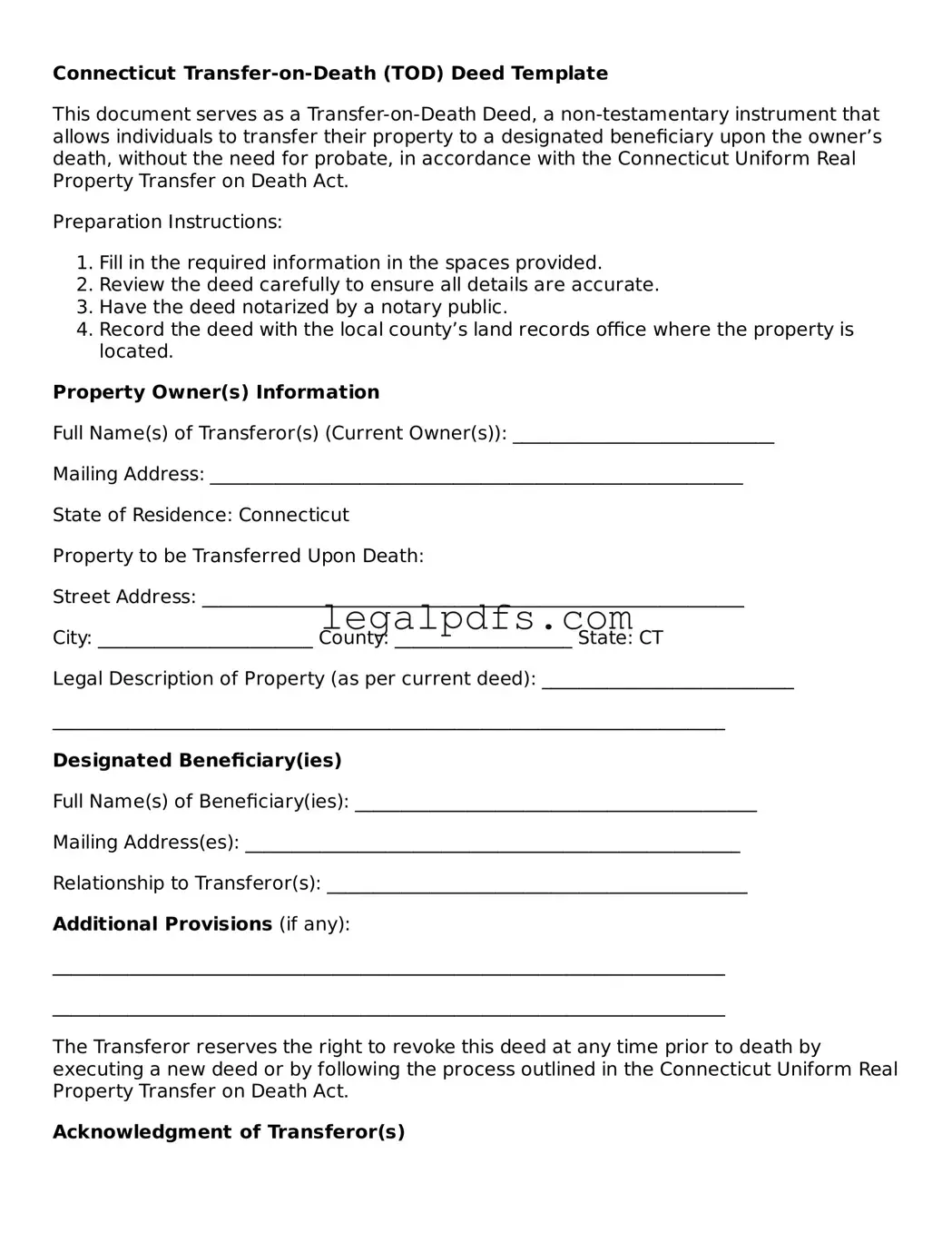Connecticut Transfer-on-Death (TOD) Deed Template
This document serves as a Transfer-on-Death Deed, a non-testamentary instrument that allows individuals to transfer their property to a designated beneficiary upon the owner’s death, without the need for probate, in accordance with the Connecticut Uniform Real Property Transfer on Death Act.
Preparation Instructions:
- Fill in the required information in the spaces provided.
- Review the deed carefully to ensure all details are accurate.
- Have the deed notarized by a notary public.
- Record the deed with the local county’s land records office where the property is located.
Property Owner(s) Information
Full Name(s) of Transferor(s) (Current Owner(s)): ____________________________
Mailing Address: _________________________________________________________
State of Residence: Connecticut
Property to be Transferred Upon Death:
Street Address: __________________________________________________________
City: _______________________ County: ___________________ State: CT
Legal Description of Property (as per current deed): ___________________________
________________________________________________________________________
Designated Beneficiary(ies)
Full Name(s) of Beneficiary(ies): ___________________________________________
Mailing Address(es): _____________________________________________________
Relationship to Transferor(s): _____________________________________________
Additional Provisions (if any):
________________________________________________________________________
________________________________________________________________________
The Transferor reserves the right to revoke this deed at any time prior to death by executing a new deed or by following the process outlined in the Connecticut Uniform Real Property Transfer on Death Act.
Acknowledgment of Transferor(s)
I/We, the undersigned, declare under penalty of perjury that the information provided in this Transfer-on-Death Deed is true and correct to the best of my/our knowledge and belief. I/We understand that upon my/our death, the property described above will transfer to the designated beneficiary(ies) without probate. I/We have the right to revoke this deed at any time before my/our death.
Signature(s) of Transferor(s): _____________________________________________
Date: ____________________
Notarization
This document was acknowledged before me on (date) ________________________ by (name of transferor) ___________________________________________________.
Notary Public: ___________________________
My commission expires: ___________________
